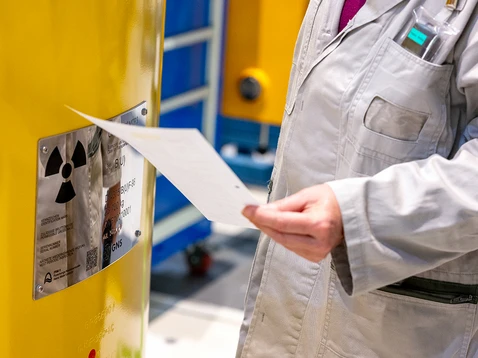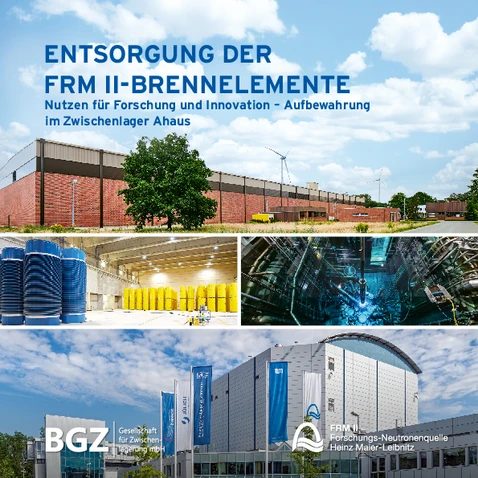Approval granted for castor transports
BE-Transporte, Aktuell, Pressemitteilung |

Each of the fuel elements supplied neutrons for research, industry, and medicine for up to 60 days. The spent elements have been stored in the FRM II decay pool for at least 6.5 years. Currently, 48 spent fuel elements are in storage at the FRM II. This means that the storage capacity of 50 is almost completely exhausted. To ensure the continued operation of the neutron source, space must be made as soon as possible.
Before the commencement of operations in 2000, it was contractually agreed that spent fuel elements from the FRM II would be transported to the central interim storage facility in Ahaus, North Rhine-Westphalia, a site designated for the storage of fuel elements from German research reactors.
Safety confirmed
Spent fuel elements from the FRM II are to be transported in Castor casks to Ahaus over a period of several years. As required by the Atomic Energy Act, a transport company contracted by the FRM II has applied to BASE for a transport permit for the first two shipments, each containing five fuel elements. “After extensive review, BASE confirmed that the transport can be carried out safely and issued the transport permit,” says Dr. Axel Pichlmaier, Technical Director of the FRM II.
Storage approved
The approval for storage specifies that Castor casks of type MTR3 containing spent fuel elements from the FRM II may be stored in the interim storage facility. BASE thoroughly reviewed and confirmed this during the approval process.
FRM II supplies neutrons for research and innovation
The purpose of FRM II is to make the neutron flux generated by nuclear fission in the reactor available for research, for example, into the development of new materials for battery storage or resistant materials for future nuclear fusion reactors and the production of urgently needed cancer drugs. This involves directing intense neutron beams onto various specialized scientific instruments in order to study matter and its properties at the atomic level.
More information:
Press release from the Federal Office for the Safety of Nuclear Waste Management (BASE)
The Heinz-Maier Leibnitz Research Neutron Source (FRM II) provides information on the transports: www.frm2.tum.de/transporte
There is a flyer (in German language) on the disposal of the FRM II fuel elements by BGZ and FRM II.

